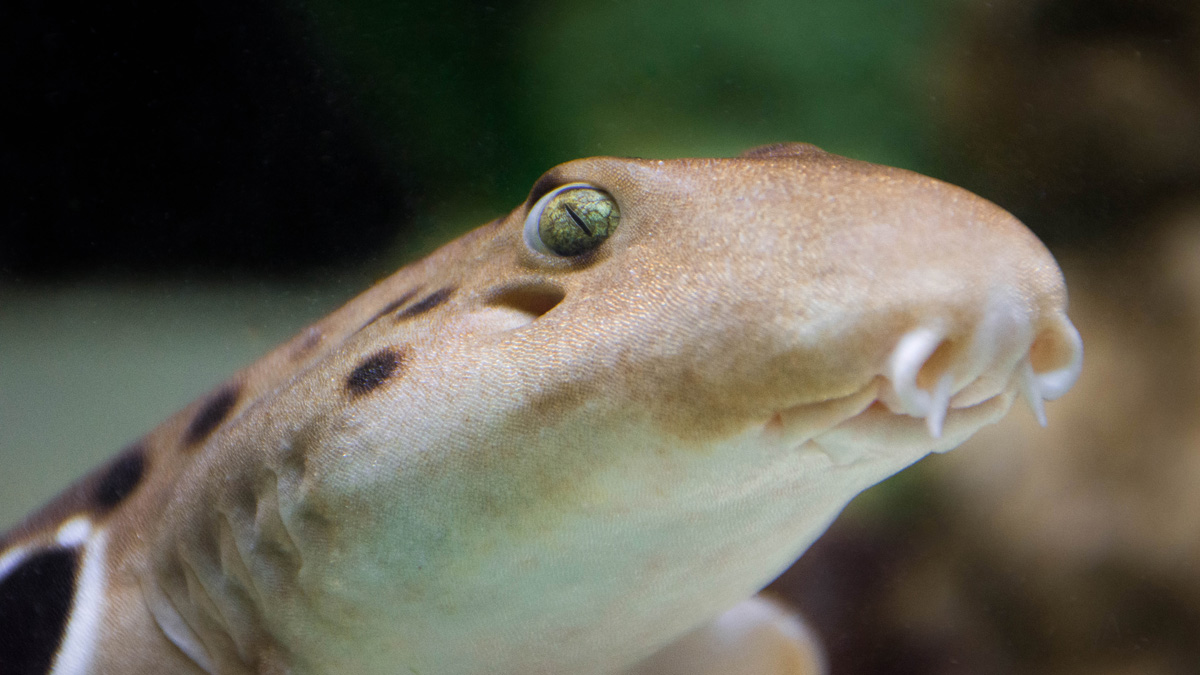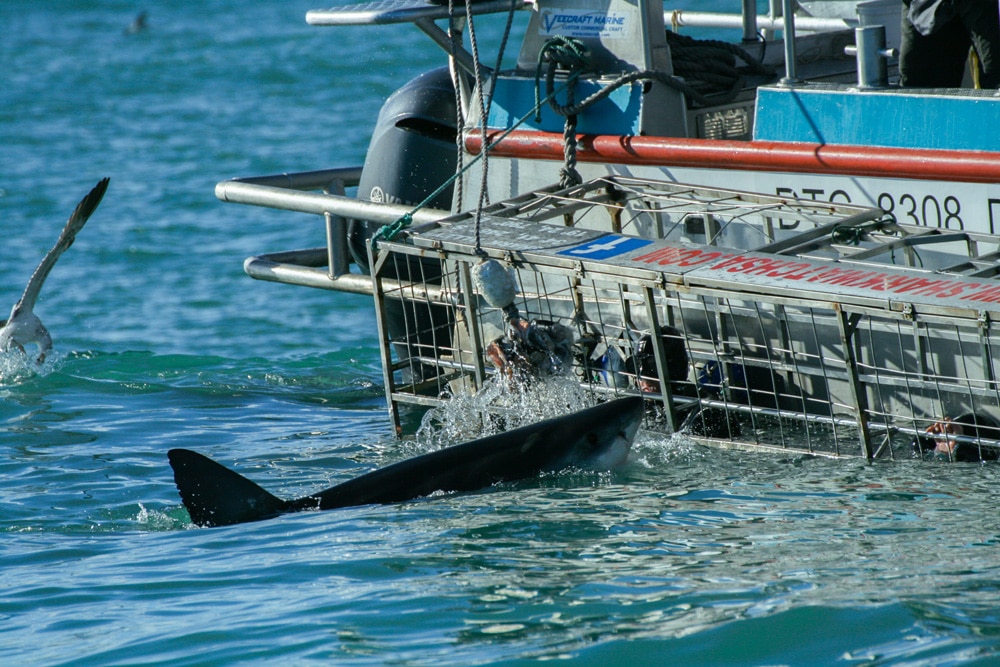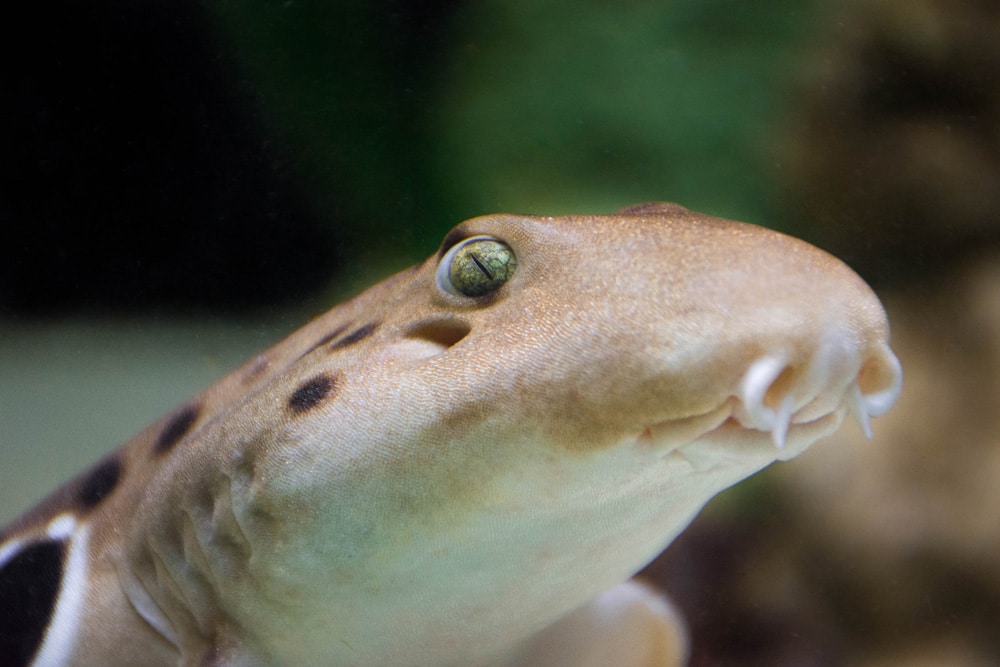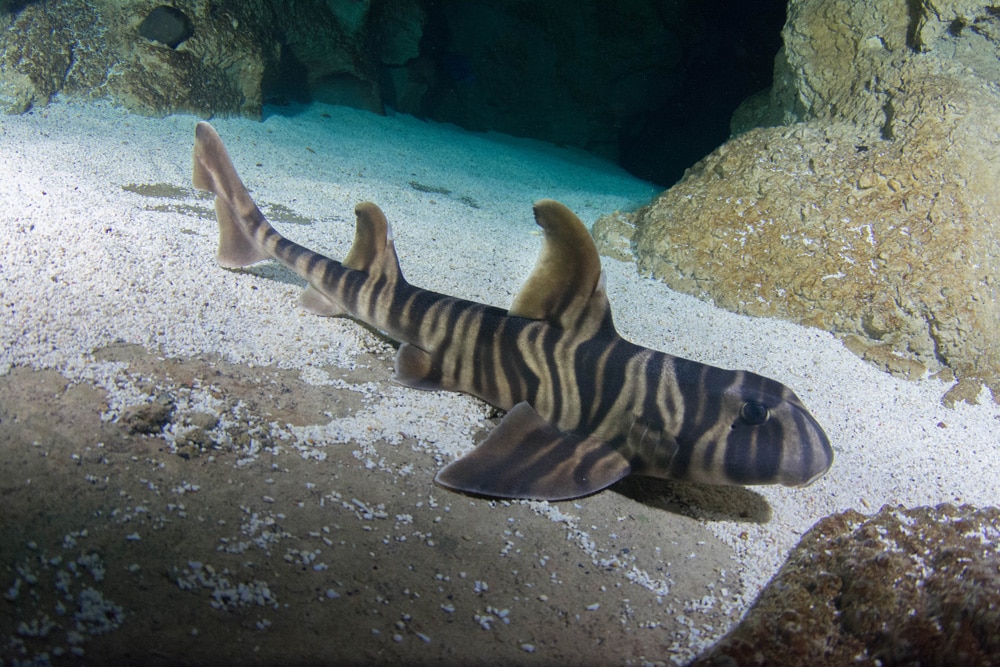Marine Life & Conservation Blogs
Sharks the Ocean’s Greatest Mystery – Part 2

Sharks are an incredibly significant animal in human culture of both the past and present, they are an animal that have been embodied in our culture for millennia. They are represented in formats such as books and clothing, but most notably in our TV and films, which is where a large portion of their negative reputation stems from. A popular TV representation of sharks comes from Discovery Channel’s ‘Shark Week’, and I believe sharks are possibly the only animal on our planet to have an entire week dedicated to them every year. However, despite this, we still know more collectively about the surface of the Moon and Mars, about Galaxies outside of our own, and even about animals that have been extinct for millions of years, than we do about sharks.
Sharks are our Ocean’s top predator, and they represent just how little we know about our blue planet. We have put more money into exploring outer space than we have exploring our seas and whilst many people call space the final frontier, I believe the final frontier is our Oceans. There are people that have lived in space for over a year, yet we aren’t able to stay underwater for more than a few short hours, and with each dive, scientists are discovering something new in the deep sea, giving us a better understanding of our oceans and the top predator that lives within them.
What we do not know
It is easier to talk about what we do not know and the implications of not knowing it, we still don’t know where most shark species mate or give birth, knowing this would accelerate conservation efforts for sharks in a huge way as these areas could then have realistic protections placed on them, allowing us to preserve key stages of the Sharks life cycle.
Marine Biologists have stated that the discovery of a White Shark breeding ground would be the holy grail of Ocean Science, but the only reports of White Sharks mating come from a handful of sightings from Fisherman and Sailors, so these cannot be used as an official record.
We know that Sharks mature late in the same way as us humans, it is estimated that some species are estimated to not be sexually mature until their late 30’s and 40’s, which means that these species are at extreme risk of disappearing due to fishing, as they aren’t able to replenish their numbers fast enough when put under extreme fishing pressure. There is a lot of debate over whether Sharks mature at a certain age or a certain size, for example it was estimated that White Sharks mature at four metres in length, however, in South Africa in 2017 a female White Shark was killed by Orcas, and it was determined that she was either immature or hadn’t mated, as there was the presence of a Hymen.
We are also still unsure about the impacts of human activities on Sharks and how losing Sharks, or their habitat, would affect the habitats and environments on land, environments in which we depend on for our survival.
What we do know
New Shark discoveries are made every year, and scientists are predicting that in the next 15-20 years we will be entering the golden age of ocean and shark discoveries. We already know that sharks are the oceans top predator and we have determined that they affect the very mechanics and functions of the Ocean, if we were to remove them, we would be putting the worlds ecosystems at risk of collapsing. Sharks are an integral part of the balance of the oceans, they help by controlling populations of other species, if we were to lose sharks, species such as turtles would have an increase in population, therefore leading to more seagrass being eaten, which is a prime food source for many animals. Thus, other smaller animals would not be able to feed, and their population would decrease, also the decrease of sea grass would affect us humans on earth as the oceans plant life helps to absorb carbon dioxide and create oxygen, and actually up to 75% of the oxygen we breathe is created from the oceans.
We know that some Shark species have complex social relationships that aid in their survival, although this has only been observed in a handful of species. Lemon Sharks form bonds as pups and hunt together in the shallow mangrove swamps of the Bimini Atoll, and will learn and hunt together and learn vital skills needed in their future survival. Hammerheads are possibly the most famous for social interactions as they form huge schools off places such as the Galapagos Islands and it has been observed that the more dominant females swim in the centre of the school and display for the males.
Some shark species, such as the Zebra Shark, have been known to mimic other animals. Zebra sharks are born with stripes (which fade as they get older) and they have the second longest tail (after the Thresher Shark), this helps them to mimic the highly venomous, White-Banded Sea Snake in order to trick predators into avoiding them, they have even been reported to mimic taking a breath at the surface like a sea snake would do.
It has recently been discovered that Greenland Sharks are now the longest lived Vertebrate on our Planet, they are believed to be able to exceed the age of 500, with females not reaching sexual maturity until they are around 150 years old. This was discovered by examining special proteins in their eyes that do not degrade with age. Determining age and sexual maturity are crucial for understanding and managing shark populations as knowing what age a Shark can breed will allow us to gauge what protections a species needs.
It has recently been discovered that female Whale Sharks are able to store sperm to use over a period of time, this is in order to ensure their chance of reproducing, even without recently mating. This is a huge advantage for conserving the species, as Whale Sharks are classed as an endangered species and so, with the number of whale sharks declining, this ensures the species can continue. Along with this, Whale Sharks have also been found to be pregnant with up to 300 pups, and these pups can be at different stages of development due to the staggered use of stored sperm.
Of all things we know there is one thing that is certain, a Shark, no matter the species, is unique and worth more to our world alive than dead. In the next blog we will explore the threats that Sharks face and how we can help Sharks through the tough times ahead.
Follow Donovan on Instagram at www.instagram.com/donovans_reefs
Blogs
The Ocean Cleanup Breaks 10,000,000 KG Barrier

The Ocean Cleanup, the global non-profit project, has removed a verified all-time total of ten million kilograms (22 million lbs.) of trash from oceans and rivers around the world – approximately the same weight as the Eiffel Tower.
To complete its mission of ridding the oceans of plastic, The Ocean Cleanup uses a dual strategy: cleaning up the Great Pacific Garbage Patch (GPGP) to remove the plastic already afloat in the oceans, while stopping the flow of plastic from the world’s most polluting rivers.
Through cleaning operations in the GPGP and in rivers in eight countries, the cumulative total of trash removed has now surpassed ten million kilograms. This milestone demonstrates the acceleration of The Ocean Cleanup’s impact, while underlining the astonishing scale of the plastic pollution problem and the need for continued support and action.
While encouraging for the mission, this milestone is only a staging point: millions more tons of plastic still pollute our oceans and The Ocean Cleanup intends to continue learning, improving and innovating to solve this global catastrophe.
This announcement comes as governments from around the world meet to continue negotiations to develop a new legally binding instrument to end plastic pollution at INC4 in Ottawa, Canada. Representatives of The Ocean Cleanup will be in attendance and the organization will be urging decision-makers to collaborate towards a comprehensive and ambitious global treaty which addresses plastic at all stages of its life cycle and in all marine environments worldwide, including in areas beyond national jurisdiction.
It is encouraging to see that the need for remediation is reflected in the various options for potential treaty provisions. It is essential that the final treaty contains clear targets for the remediation of legacy plastic pollution, and reduction of riverine plastic emissions.
Tackling plastic pollution requires innovative and impactful solutions. The treaty should therefore incentivize the innovation ecosystem by fostering innovations that make maximal use of data, technology and scientific knowledge – such as those designed and deployed by The Ocean Cleanup.
‘After many tough years of trial and error, it’s amazing to see our work is starting to pay off – and I am proud of the team who has brought us to this point.’ said Boyan Slat, Founder and CEO of The Ocean Cleanup. ‘While we still have a long way to go, our recent successes fill us with renewed confidence that the oceans can be cleaned.’
The Ocean Cleanup was founded in 2013 and captured its first plastic in 2019, with the first confirmed catch in the GPGP coming soon after the deployment of Interceptor 001 in Jakarta, Indonesia. After surpassing one million kilograms of trash removed in early 2022, the non-profit project has since progressed to the third iteration of its GPGP cleaning solution, known as System 03, and a network of Interceptors currently covering rivers in eight countries, with more deployments set for 2024.
About The Ocean Cleanup
The Ocean Cleanup is an international non-profit organization that develops and scales technologies to rid the world’s oceans of plastic. They aim to achieve this goal through a dual strategy: stemming the inflow via rivers and cleaning up the legacy plastic that has already accumulated in the ocean. For the latter, The Ocean Cleanup develops large-scale systems to efficiently concentrate the plastic for periodic removal. This plastic is tracked and traced through DNV’s chain of custody model to certify claims of origin when recycling it into new products. To curb the tide via rivers, The Ocean Cleanup has developed Interceptor™ solutions to halt and extract riverine plastic before it reaches the ocean. Founded in 2013 by Boyan Slat, The Ocean Cleanup now employs a broadly multi-disciplined team of approximately 140. The foundation is headquartered in Rotterdam, the Netherlands.
For more information, visit: theoceancleanup.com and follow @theoceancleanup on social media.
Marine Life & Conservation Blogs
Creature Feature: Dusky Shark

 In this series, the Shark Trust will be sharing amazing facts about different species of sharks and what you can do to help protect them.
In this series, the Shark Trust will be sharing amazing facts about different species of sharks and what you can do to help protect them.
This month we’re taking a look at the Dusky Shark, a highly migratory species with a particularly slow growth rate and late age at maturity.
Dusky sharks are one of the largest species within the Carcharhinus genus, generally measuring 3 metres total length but able to reach up to 4.2 metres. They are grey to grey-brown on their dorsal side and their fins usually have dusky margins, with the darkest tips on the caudal fin.
Dusky Sharks can often be confused with other species of the Carcharhinus genus, particularly the Galapagos Shark (Carcharhinus galapagensis). They have very similar external morphology, so it can be easier to ID to species level by taking location into account as the two species occupy very different ecological niches – Galapagos Sharks prefer offshore seamounts and islets, whilst duskies prefer continental margins.
Hybridisation:
A 2019 study found that Dusky Sharks are hybridising with Galapagos Sharks on the Eastern Tropical Pacific (Pazmiño et al., 2019). Hybridisation is when an animal breeds with an individual of another species to produce offspring (a hybrid). Hybrids are often infertile, but this study found that the hybrids were able to produce second generation hybrids!
Long distance swimmers:
Dusky sharks are highly mobile species, undertaking long migrations to stay in warm waters throughout the winter. In the Northern Hemisphere, they head towards the poles in the summer and return southwards towards the equator in winter. The longest distance recorded was 2000 nautical miles!
Very slow to mature and reproduce:
The Dusky Shark are both targeted and caught as bycatch globally. We already know that elasmobranchs are inherently slow reproducers which means that they are heavily impacted by overfishing; it takes them so long to recover that they cannot keep up with the rate at which they are being fished. Dusky Sharks are particularly slow to reproduce – females are only ready to start breeding at roughly 20 years old, their gestation periods can last up to 22 months, and they only give birth every two to three years. This makes duskies one of the most vulnerable of all shark species.
The Dusky Shark is now listed on Appendix II of the Convention on the Conservation of Migratory Species (CMS), but further action is required to protect this important species.
Scientific Name: Carcharhinus obscurus
Family: Carcharhinidae
Maximum Size: 420cm (Total Length)
Diet: Bony fishes, cephalopods, can also eat crustaceans, and small sharks, skates and rays
Distribution: Patchy distribution in tropical and warm temperate seas; Atlantic, Indo-Pacific and Mediterranean.
Habitat: Ranges from inshore waters out to the edge of the continental shelf.
Conservation status: Endangered.
For more great shark information and conservation visit the Shark Trust Website
Images: Andy Murch
Diana A. Pazmiño, Lynne van Herderden, Colin A. Simpfendorfer, Claudia Junge, Stephen C. Donnellan, E. Mauricio Hoyos-Padilla, Clinton A.J. Duffy, Charlie Huveneers, Bronwyn M. Gillanders, Paul A. Butcher, Gregory E. Maes. (2019). Introgressive hybridisation between two widespread sharks in the east Pacific region, Molecular Phylogenetics and Evolution 136(119-127), https://doi.org/10.1016/j.ympev.2019.04.013.
-

 News3 months ago
News3 months agoCapturing Critters in Lembeh Underwater Photography Workshop 2024: Event Roundup
-

 Marine Life & Conservation Blogs3 months ago
Marine Life & Conservation Blogs3 months agoCreature Feature: Swell Sharks
-

 Blogs2 months ago
Blogs2 months agoMurex Resorts: Passport to Paradise!
-

 Gear Reviews3 weeks ago
Gear Reviews3 weeks agoGEAR REVIEW – Revolutionising Diving Comfort: The Sharkskin T2 Chillproof Suit
-

 Blogs3 months ago
Blogs3 months agoDiver Discovering Whale Skeletons Beneath Ice Judged World’s Best Underwater Photograph
-

 News2 months ago
News2 months agoPADI Teams Up with Wellness Brand Neuro to Drive Ocean Change and Create a Blue State of Mind
-

 Gear Reviews3 months ago
Gear Reviews3 months agoGear Review: Oceanic+ Dive Housing for iPhone
-

 News3 months ago
News3 months agoWorld’s Best Underwater Photographers Unveil Breathtaking Images at World Shootout 2023






















